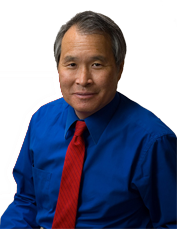Two Case Studies on Maximizing Retirement
As I write this article, typical retirement investment options are: 0.88% coupon interest on a 10-year and 1.63% on a 30-year U.S. Treasury Bond; 1% or less on bank CDs; and 2.02% average dividend yield and 4.57% compound growth rate before fees over the last 21 years on S&P 500 stocks.
I will cover two case studies that are composites of various client situations I have seen over the decades.
Case Study #1: a couple ages 54 have combined $100,000 annual income; have saved $500,000; can save $15,000/year until retirement and can average 4% compound growth rate in the stock market. Assume that all debt is paid off at retirement. They pay $10,000 of annual income tax and their goal is to have at least $80,000 of annual retirement income.
Solution: They both retire at age 67, full-retirement age for Social Security (SS) benefits with $50,000 of annual SS income. At age 54, they deposit $300,000 in a private pension fund, which will generate $32,225 of annual retirement income for life at age 67. Their $15,000/year of annual savings, compounding at 4% for 14 years in the stock market, will become $285,354. Assume this will pay for bucket list dreams during their first 10 years of retirement. Assume that the other $200,000 grows at the same 4% compound growth rate and becomes $333,015 in 13 years. If this earns an average 2% dividend yield, that’s another $6,660 of annual retirement income. Total annual retirement income at age 67 is $88,885. However, if the stock market crashes within 5 years of retirement or just as they retire, life is no longer fun.
Case Study #2: A couple ages 60 have combined $180,000 annual gross income and owe $30,000 of annual taxes. Both work and no longer save because they want to enjoy expensive hobbies now in exchange for delaying retirement until age 70. Assume they have no debt at retirement. They have saved $1 million and their dream is to be able to afford extensive foreign travel when they retire and help grandkids
Solution: They decide to wait until age 70 in order to maximize their SS retirement benefits, which will be $65,000 annually. At age 60, they deposit $600,000 in a private pension fund, which will generate $62,315 at age 70. They decide to save tax by selling power from their solar business equipment to large food companies. If they save $25,000 of annual taxes for 10 years, with an effective 9% yield, this will become $414,007 at age 70. At age 70, they earn 7% annually on the $414,007 in a real estate lending program or equipment leasing program and this will generate $28,980 of extra retirement income.
Assume that their extra $400,000 ($1 million saved less $600,000 deposited in a private pension) is used to purchase solar business equipment and the $400,000 returns to them at age 70. It’s now available to either be reinvested or to fund their bucket list dreams. Total retirement income of $156,295 is $65,000 from SS; $62,315 from the private pension; and $28,980 from the real estate lending or equipment leasing program. Any income from the $400,000 is extra.
In contrast, if they relied on stocks paying an average 2% dividends, their $1 million would only generate $20,000 annually. If they retired at age 65, their Social Security would only be about $50,000. It’s an entirely different retirement with $70,000 vs. $156,295 of annual income.
Conclusion: Waiting until age 70 to start your SS; saving taxes; and alternative investments can help you afford your bucket list dreams in retirement without stock market risk.
Free Information on Retirement Planning, Solar Business Investments, and Tax Savings can be found at drharoldwong.com or solarbusinessinvestments.com. Please RSVP by contacting Dr. Harold Wong at (480) 706-0177 or
Dr. Wong earned his Ph.D. in Economics at University of California/Berkeley and has appeared on over 400 TV/radio programs.

